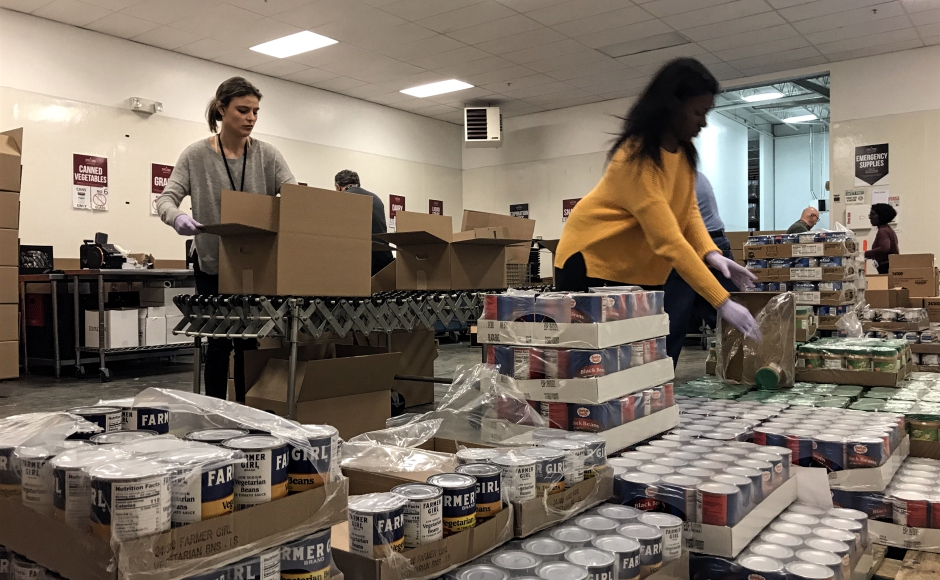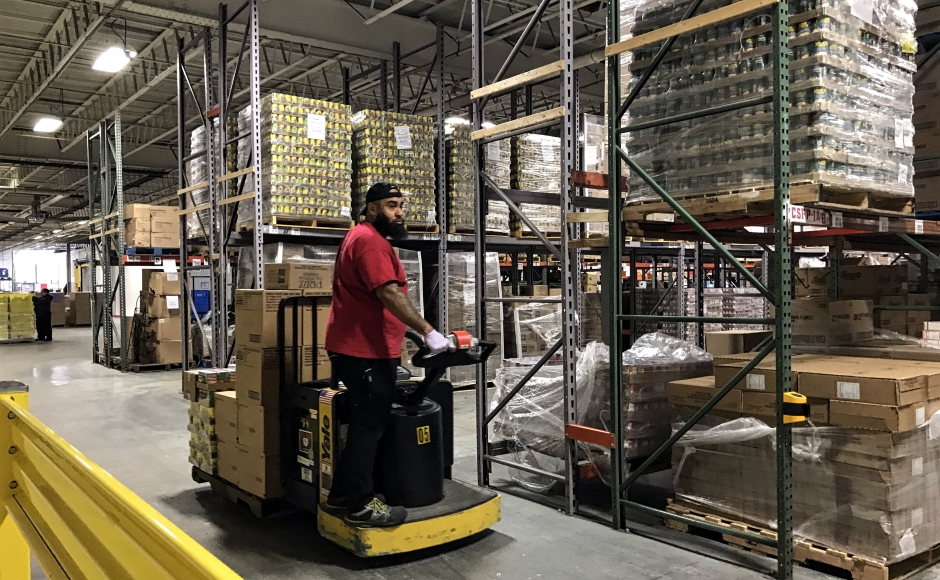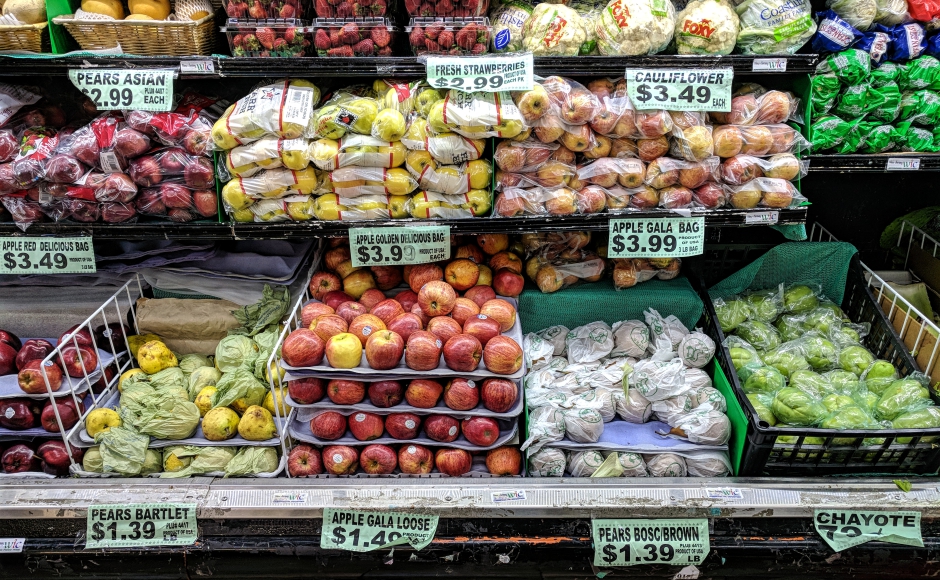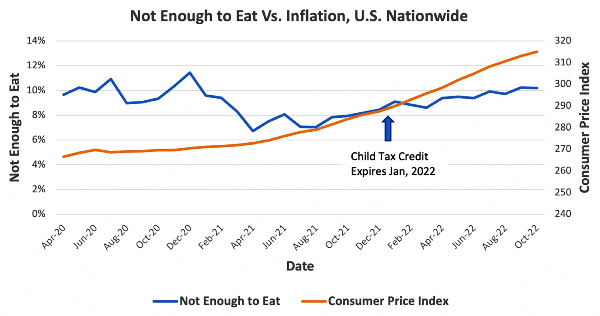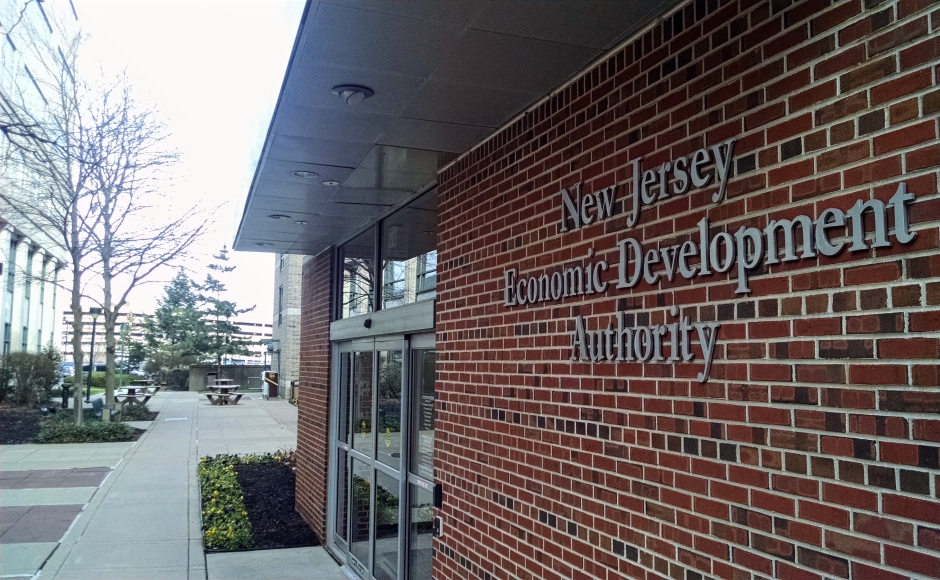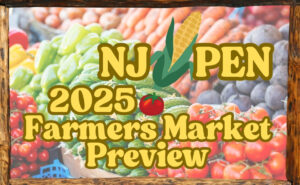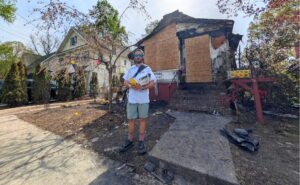In the first installment of our reporting for the Stories Invincible project, we explore the circumstances underlying food insecurity in Camden City, stopgaps, and emerging policy solutions.
By Matt Skoufalos | January 18, 2022
In September, NJ Pen was among a group of journalism fellows chosen to participate in the Stories Invincible reporting project, an effort to connect with Camden City residents on key issues in their community.
Our contribution is an exploration of the efforts to bring a grocery store into the city, which has been labeled a food desert community (FDC) by the New Jersey Economic Development Authority (NJEDA) for its limited access to nutritious food.
In this installment, we explore the breadth and scope of food insecurity in the city, state, and country overall; ongoing food relief efforts in the region; and financial incentives available to those working to address food insecurity across New Jersey.

Some of the children served by the 2016 Food Bank Summer Meals program. Credit: Food Bank of South Jersey.
Understanding hunger
The problem of food insecurity is a complex one; as such, the most relevant research and information about it derives from a variety of sources, some of them governmental (U.S. Census data, surveys of food benefit recipients), some of them anecdotal (reports from volunteers in the field).
The picture they paint is often an evolving one, and yet this variety of perspectives that informs it is what makes it more complete.
The primary institution committed to the cause of food insecurity in the United States is the nonprofit Feeding America, which coordinates nationwide hunger relief efforts among a massive network of food banks, food bank associations, and smaller community partners.
More than 98 percent ($4.37 billion) of its $4.45-billion operating budget is dedicated to programs and services that include food procurement and distribution, public awareness of food insecurity, advocacy and policy development around those issues, and research about the problem of food insecurity in the United States.
Feeding America is also the chief driver of information about food insecurity and its underlying impact on communities across the country. The organization collaborates with thousands of smaller agencies to develop and support food distribution networks that understand food demand in the areas and among the clients they serve.
These networks include larger, regional partners, like the Pennsauken-based Food Bank of South Jersey, which warehouse and re-distribute food to community pantries that ultimately reach individuals and families.
Where there are gaps that those services don’t fill, places like the Food Bank of South Jersey run programs that parallel the pantry distribution models for specific community groups, like seniors, students, and families with young children. The more specific those communities and their dietary needs, the more difficult it can be to support them.
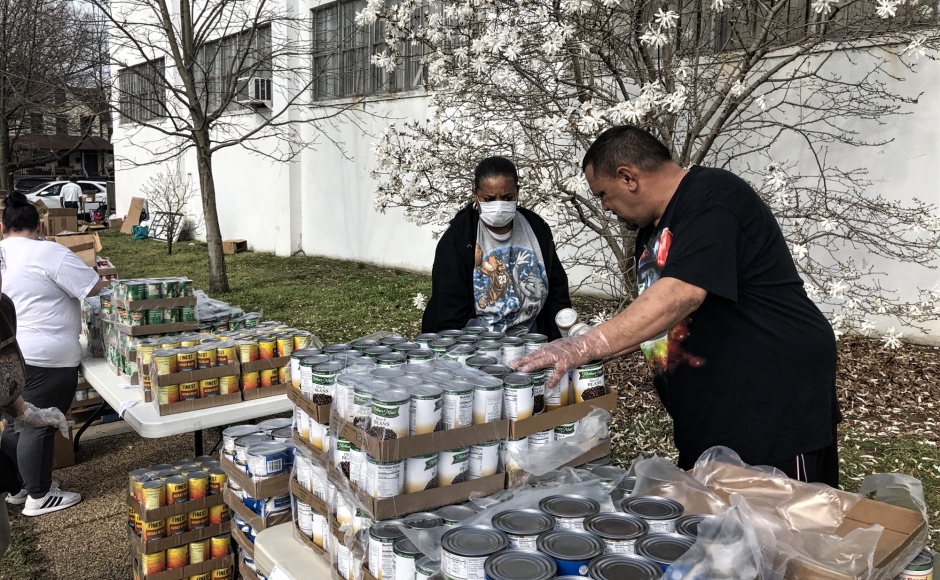
Volunteers at a pop-up neighborhood distribution point during the COVID-19 pandemic. Credit: Food Bank of South Jersey.
Wants, needs, and what’s available
The kinds of goods that people relying on supplemental food distribution often seek out may not always be available to them for a number of reasons.
The most sought-after items are always meats, fresh produce, and dairy, and it’s easy to understand why.
These are commonly the most expensive goods at the grocery store, have been subject to incredible price volatility since the onset of the novel coronavirus (COVID-19) pandemic, and form the staple of most meals.
They’re also the most difficult to keep on-hand unless the facility distributing them has cold storage and the resources to cover the electric bills that industrial freezers and refrigerators can incur. So a pantry that wants to offer perishable items must be both well-resourced and open frequently enough to distribute food items while they’re still fresh.
Some food distribution centers will provide pre-packaged meals for individuals or families that are meant to cover the nutritional needs of its recipients. These are convenient for distributors, and became the most common mechanism during the COVID-19 pandemic, when social distancing was a priority.
Recipients, however, overwhelmingly prefer a choice model, which eliminates food waste — from people being given items they don’t want, or which are wrong for their diets — and emphasizes individual dignity.
Who uses a food bank?
“There’s a difference between what people need and what food banks provide,” said Sarah Geiger, Director of Programs for the Food Bank of South Jersey.
“For people who are in need, we are never their only source of food, nor should we be.
“We try to provide a consistent variety of staples.”
Many people who avail themselves of resources from a food bank may be acquiring groceries from a variety of sources, including government benefits, income from working a job or jobs, as well as from a food pantry.
“By and large, people don’t show up to pantries for government food unless they need it,” Geiger said. “Everyone does their best to make it a dignified experience, but to show up and ask for help is difficult.
“Hunger is in our own communities,” she said. “It’s very easy to never be exposed to it; to never have the opportunity to think about what it might be like to not have enough.”
Food banks also know that they aren’t reaching everyone they need to. Some vulnerable sub-groups may not be reachable due to issues of mobility, hours of operation, or specificity of need.
For other people, who may need food, but may not have a stable environment in which to store or prepare it, programs like Meals on Wheels can help to overcome some of these issues of accessibility. And often, paid staff — or, more likely, unpaid volunteers — are needed to facilitate some of these specific outreach programs, which further tests the limits of available resources.
“For the people we serve, there is a huge gap that we are just starting to understand and address,” Geiger said. “I think the overarching takeaway is that there’s never one silver bullet.
A snapshot of need
Food insecurity remains a particularly persistent facet of life for many in Camden City, where about 40 percent of residents live around the poverty level.
The Food Bank and its partner agencies work to make up that affordability gap, not only by distributing food to those who need it, but by working to increase the quality of food available to residents.
According to 2020 recommendations from the Camden Food Access Work Group, the issues of systemic local poverty and food insecurity also have contributed to the prevalence of health concerns in the city:
Despite progress in recent years, almost 37 percent of city residents live in poverty. Simultaneously, more than 43 percent of Camden adults are obese, over 38 percent have high blood pressure, and over 17 percent have diabetes. Surveys of hunger in Camden have found that as many as 65 percent of the city’s residents experience some degree of food insecurity. At the same time, more than two-thirds of Camden residents live in communities with low supermarket access.
—from “Healthy Food Access Camden,“ by the Camden Food Access Work Group
The city has been designated a food desert by the New Jersey Departments of Community Affairs and Agriculture, as well as by the New Jersey Economic Development Authority (NJEDA), which has earmarked millions for entities working to “increase access to nutritious foods and develop new approaches to alleviate food deserts.”
Some strategies that are being undertaken presently to address food insecurity in Camden City involve organizing the corner stores where many residents shop for groceries.
Of an estimated 100 corner stores in the city, more than 40 are active within the Healthy Corner Store Initiative, an effort marshaled by the Philadelphia, PA-based Food Trust. The initiative has begun by helping to increase capacity at the corner stores, and maximize their resources to form cooperative purchasing agreements.
Food insecurity on the rise nationwide
Food insecurity isn’t just a local problem, however; it’s a symptom of broader poverty and the impact of limited earning potential among an increasingly large segment of the country.
According to a December 2022 report from the New York, New York-based nonprofit Hunger Free America, about 30 percent more Americans didn’t have enough to eat for at least one week in 2022 than did in 2021.
The agency estimates that roughly 11 percent of the population of the United States — some 35.8 million people — battle food insecurity. Of these, 10.6 million (14.5 percent) are children, 5.3 million (7 percent) are seniors, and 12.7 million (8.2 percent) are adults with jobs.
From 2019 to 2021, Hunger Free America estimates that 8.5 percent of the population of New Jersey — nearly 751,000 people — lived in a food-insecure household. Of those, 203,925 (10.4 percent) were children, 128,649 (6.2 percent) were seniors, and 309,725 (7.2 percent) were employed adults.
By October 2022, the agency estimated that nearly 1 million New Jerseyans (942,604 people) did not have enough to eat, up some 89 percent from year-earlier totals. The agency attributed that increase to “the expiration of the expanded Child Tax Credits and universal school meals, coupled with the impact of inflation,” the report read.
Conversely, Hunger Free America charted a 41-percent drop in food-insecure households from December 2020 to April 2021, which coincided with a nearly 23-percent increase in federal spending for the Supplemental Nutrition Assistance Program (SNAP), which benefits low-income households.
“While there is insufficient data to prove correlation or causation, there is a known relationship between hunger rates and the SNAP program,” the report read. “The 2021 Supplemental Poverty Measure estimated that the SNAP program lifted 2.8 million people out of poverty in 2021. These historic SNAP spending levels have had to compete with high inflation rates, among other factors.”
Because increased food and cash assistance exceeded the rising costs of food prices “…the vast majority of Americans [were] in far better condition than they would have been without this extra aid,” the report read.
Such details underscore a key point, Geiger said: that the work that food banks and food-insecurity programs do is more about addressing earnings shortfalls and income inequality than it is about redistributing food.
“We don’t have a system where people can make a living wage anymore, and the first thing to go always is food,” she said. “In our field, we can’t solve those things, so our job is to make sure there’s a real strong safety net to make up the difference.”
The Hunger Free America report was blunter in its assessment:
“The solutions to these problems remain the same: businesses should voluntarily pay their workers a living wage, and when they don’t, the government should force them to do so. The government should also ensure a robust cash and food safety net when wages aren’t enough.”
Policy solutions
Although the city is one of the most-discussed food desert communities (FDCs) in New Jersey, Camden is home to a number of grocery stores.
They tend to be mid-sized, independent businesses, like Fayer’s Market in Parkside, or Universal Food Markets on Federal Street.
Small, regional chains include Cousin’s in the Marlton section (anchored in Philadelphia), Price Rite of Fairview, which is owned by the Wakefern Corporation of Keasbey, and its neighbor, Save a Lot, which is headquartered in St. Ann, Missouri.
Some of the closest supermarkets in neighboring communities include the Cherry Hill ShopRite, Wegmans, and Whole Foods stores on Route 70, the West Collingswood Aldi, and the Supremo on Route 130 in Pennsauken.
Previous efforts to bring in a larger commercial player fizzled in 2016, after ShopRite backed out of a highly publicized plan to establish a location in the city, despite the promise of economic incentives from NJEDA. Former Camden City Mayor Dana Redd blamed “market forces” for the collapse of other redevelopment deals that would have addressed the issue as well.
In the time since, NJEDA has formulated a number of new incentives designed to take aim at the problem of food insecurity in FDCs, all of which are contemplated in the state Food Desert Relief Act.
They include:
- $1.5 million in Food Security Planning grants, awarded in amounts of $75,000 to $125,000 to municipal governments, county governments, and redevelopment agencies working to redevelop properties in food desert communities (November 2022)
- As much as $40 million per year in tax credits, loans, grants, and/or technical assistance to increase access to nutritious foods and develop new approaches to alleviate food deserts under the Food Desert Relief Tax Credit Program, which “encourages sustainability of supermarkets for a lasting impact on communities.” NJEDA will fund as much as 40 percent of the cost to develop “the first new or substantially rehabilitated supermarket in a designated Food Desert Community” and as much as 20 percent of the cost of a second. Businesses receiving these incentives must operate for at least seven years. (December 2022)
- $2.5 million in Food Retail Innovation in Delivery Grants (FRIDG) to help buy and install temperature-controlled lockers in FDCs; “last-mile solutions” in which to store meals delivered by online grocery services. (January 2023)
- $5 million in third-round funding for Sustain & Serve NJ, a project that funds purchases of meals from New Jersey restaurants by nonprofit groups that distribute those meals in communities of need. In total, the program has received $57.5 million through three rounds of funding, purchasing more than 4 million meals at 400 restaurants across the state. The third round is expected to provide 450,000 meals. (December 2022)
- The Brownfields Redevelopment Incentive (BRI) Program is another NJEDA program that possibly could support the creation of a supermarket in Camden City. It will award a total of $300 million over six years to cover environmental remediation and redevelopment incentives designed to bring a brownfield site into “productive reuse as an integral part of community development.”
In the next phase of this project, we will explore what the visioning process looks like for bringing a supermarket or (supermarkets) into Camden City; where they could be located; how they would interact with the city’s existing food infrastructure; and more.
Stories Invincible is supported by the Community Info Coop in partnership with the Movement Alliance Project, thanks to original funding from the Geraldine R. Dodge Foundation and the New Jersey Local News Lab Fund, a partnership among Dodge, Democracy Fund and the Community Foundation of Louisville.

